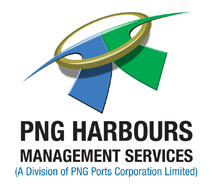The handling of Dangerous goods within the Port Limits is done in consistent with other relevant National legislations but most of all it is consistent with several International codes which include the International code for the Maritime transport of Dangerous Goods (IMDG code).
Accordingly, all Dangerous goods are classified in accordance with the code and all items that fall under these categories from Class 1 to 4 and respectively from 6 to 9 will require a permit from the port Manager. Class 5.1 cargoes are assessed separately specifically the Ammonium Nitrate Dangerous goods handling, refer to details here;
All Dangerous goods in Class 1 and 7 shall be the first goods to be unloaded from a vessel at berth and onto a waiting truck and transported out of the port and shall also be the last cargo to be loaded on to a waiting vessel at berth. These cargoes should always be accompanied with a police clearance certificate issued by the Royal Papua New Guinea Constabulary (RPNGC).
In ports where there is no storage facilities for classes 1 & 7 transshipment cargoes, the ship owner or agent shall seek prior approval to have such cargoes on board the vessel while loading/unloading other cargoes of that same vessel to which the cost of leaving the cargo on board shall be borne by the shipper or owner(s) of the cargoes where extra security shall be provided to the cargoes.
The different types of permits issued by the Port Manager for the handling of Dangerous goods are;
a) Application to Load Dangerous Cargoes
b) Application to Unload Dangerous Cargoes
c) Application to Transfer Dangerous cargoes
d) Application to Handle bulk quantities of Oil/Fuel Oil
e) Application to restore class 1 & 7 to be on board the vessel while loading/unloading other cargoes.
The applicant is to submit with a complete and true copy of the cargo manifest.
All port stakeholders such as the Port Facility Operator, Stevedore, Agent and master are all equally responsible to ensure that the set guidelines are followed to guarantee the safety of the other port users while DG’s are handled within the Port area.


